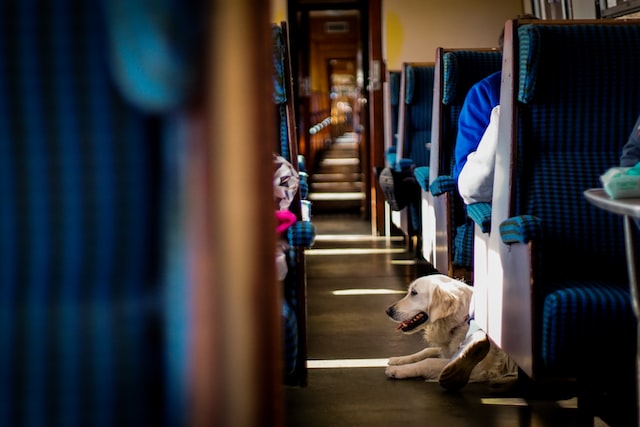Spain’s Renfe on Tuesday September 13th kick-started its three-month trial to assess the viability of allowing canines of up to 40 kilos on its trains.
Up to now, Renfe only permitted passengers to travel with small dogs under 10 kilos in weight, kept at all times inside a carrier, with the exception of guide or assistance dogs.
Only two large dogs will be allowed on each train during the trial period, with a maximum of one per passenger.
A specific dog-friendly area on one of the train’s carriages will be allocated for these medium and large pooches.
Dog owners will also have to follow a set of rules and recommendations, such as carrying a blanket with them, taking toys that don’t make noise or squeak, avoid feeding them during the three hours prior to the trip to prevent the animals from doing their business or getting dizzy on the train, as well as taking them for a long walk before the journey.
Dogs that aren’t kept inside a pet carrier will have to wear a muzzle and be kept on a non-extendable leash (3 metres long max) at all times.
The dog breeds (small, medium and large) that will be allowed on these high-speed AVE and Long Distance trains between Barcelona and Madrid include Beagles, Bichons, Boxers, Bull Terriers, Bulldogs, Poodles, Pugs, Chow Chows, Cocker Spaniels, Dalmatians, Collies, Greyhounds, Golden Retrievers, Siberian Huskies, Labradors, Alsatians, Pekinese, Pointers, Pomeranians, Rottweilers, Schnauzers, Setters, Shar Peis and different terrier breeds.
However, given the 40kg weight restrictions, Bordeaux Mastiffs, Great Danes, Spanish Mastiffs, Saint Bernards, Tosa Inus, Newfoundland dogs and Bullmastiffs cannot be included on the list, as many of these breeds can weigh more than 60 kilos.
Passengers who want to book tickets for themselves and their furry friends on this initial Madrid-Barcelona route will find the option of adding their “mascota grande” (large pet) on the Renfe website.
Whereas Renfe’s rates for small dogs and other pets (cats, ferrets, birds) are €10, for larger dogs weighing between 10kg and 40kg the fixed price per trip will be €35.
Passengers travelling with their medium or large dogs will not be able to choose their seats either, instead they will have two spots pre-assigned to them (next to each other) for themselves and their pet.
Dog owners will also have to fill in a civil responsibility form at the train station’s Centro de Servicios 30 minutes before travel. It is then that they’ll be handed a cover and a mat for the seat as well as a gift for their pet.



 Please whitelist us to continue reading.
Please whitelist us to continue reading.
Good grief.
The hoops you must jump through is crazy.
In my 56 years I have never heard of a dog attacking anyone on a train. Attacking other dogs on a train (apart from the bark – keep away).
It may be a test to see if it’s ok but it’s clear from the existing rules that when renfe talks about animals it explicitly bans poultry. Rules pre 1970!?